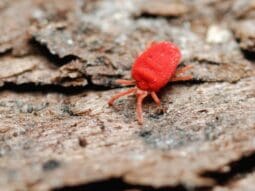
Living in San Antonio means dealing with a variety of pests throughout the year. As the seasons change, so do the types of critters we encounter in our homes and gardens. Understanding these seasonal pest cycles is crucial for effective prevention and control.
We'll explore the common pests that plague San Antonio residents during each season. From summer's relentless mosquitoes to winter's sneaky rodents, we'll cover it all. By knowing what to expect and when, you'll be better equipped to protect your home and family from these unwelcome visitors. Let's dive into the fascinating world of seasonal pest cycles in the Alamo City.
Understanding Seasonal Pest Cycles in San Antonio
San Antonio's unique climate creates an environment where pests thrive year-round. We've observed distinct patterns in pest activity that correspond to the changing seasons. These cycles affect when and how different pests appear, multiply, and seek shelter in our homes and businesses.
Spring Awakening
As temperatures rise in spring, dormant pests become active. We see an increase in:
- Ants: Foraging for food and establishing new colonies
- Termites: Swarming to start new infestations
- Mosquitoes: Breeding in standing water left by spring rains
- Roaches: Emerging from winter hiding spots
Summer Surge
Summer's heat and humidity create ideal conditions for rapid pest reproduction. Common summer pests include:
- Flies: Multiplying quickly in garbage and organic matter
- Mosquitoes: Reaching peak activity levels
- Wasps and Bees: Building nests and becoming more aggressive
- Fleas and Ticks: Thriving in warm weather and attaching to pets
Fall Invasion
As temperatures cool, pests seek shelter indoors. We notice an uptick in:
- Rodents: Mice and rats looking for warmth and food
- Spiders: Moving inside to escape dropping temperatures
- Stink Bugs: Clustering on sunny exterior walls before entering homes
- Cockroaches: Increasing indoor activity as outdoor food sources diminish
Winter Refuge
While pest activity slows in winter, some remain problematic:
- Rodents: Continuing to seek shelter and food indoors
- Cockroaches: Persisting in heated indoor environments
- Bed Bugs: Spreading through holiday travel and guests
- Overwintering Pests: Cluster flies and ladybugs hibernating in wall voids
Understanding these seasonal patterns helps us anticipate and prevent pest problems throughout the year in San Antonio. By knowing when specific pests are most active, we can implement targeted prevention strategies and maintain effective pest control year-round.
Spring: The Awakening of Pests
Spring in San Antonio marks the beginning of increased pest activity. As temperatures rise and rainfall increases, various insects and rodents emerge from their winter dormancy, seeking food and shelter.
Common Spring Pests to Watch For
In San Antonio, spring brings a surge of pest activity. We commonly encounter:
- Ants: Argentine and fire ants become more visible, foraging for food.
- Termites: Swarmers emerge, indicating potential infestations.
- Mosquitoes: Warmer temperatures and standing water lead to breeding.
- Roaches: American and German cockroaches venture out more frequently.
- Spiders: Various species become more active, spinning webs in and around homes.
These pests thrive in spring's mild temperatures and increased moisture, making it crucial for homeowners to stay vigilant.
Preventative Measures for Spring
To minimize spring pest problems in San Antonio, we recommend:
- Seal entry points: Close gaps in walls, windows, and doors to prevent pest intrusion.
- Remove standing water: Eliminate mosquito breeding sites by emptying containers and fixing leaks.
- Trim vegetation: Keep bushes and trees away from your home to reduce pest access points.
- Clean gutters: Remove debris to prevent moisture accumulation and pest habitation.
- Store food properly: Use airtight containers to deter ants and roaches.
- Regular inspections: Check your property for signs of termite activity or other pest issues.
- Professional treatments: Schedule preventive pest control services to target emerging spring pests.
By implementing these measures, San Antonio residents can significantly reduce the risk of spring pest infestations and maintain a pest-free environment.
Summer: Peak Pest Activity
San Antonio's summer heat brings pest activity to its peak. As temperatures soar, we see a surge in various insects and rodents seeking shelter, food, and water in and around our homes.
Heat-Loving Pests in San Antonio
Summer in San Antonio attracts numerous heat-loving pests. Ants, particularly fire ants, thrive in the warm weather and become more aggressive in their foraging. Cockroaches multiply rapidly, with the German cockroach being a common indoor nuisance. Mosquitoes breed prolifically in standing water, posing both a nuisance and health risks. Flies increase in number, attracted to food and garbage. Termites swarm during this season, potentially causing significant structural damage.
Summer Pest Control Strategies
Effective summer pest control in San Antonio requires a multi-faceted approach. Seal cracks and crevices in foundations, walls, and around windows to prevent pest entry. Keep lawns trimmed and remove standing water to reduce mosquito breeding sites. Store food in airtight containers and maintain a clean kitchen to deter ants and cockroaches. Use screens on windows and doors to keep flying insects out. Consider professional pest control services for comprehensive treatment, especially for persistent infestations. Regular inspections and prompt action are key to managing summer pest problems in San Antonio.
Fall: Preparing for Cooler Weather
As temperatures drop in San Antonio, pests seek warmth and shelter in our homes. We'll explore common autumn pest invasions and provide effective prevention and protection tips to keep your home pest-free during this transitional season.
Autumn Pest Invasions
Fall in San Antonio brings a new wave of pest challenges. Rodents, such as mice and rats, become more active as they search for warm shelter. Cockroaches and ants continue to be problematic, while stink bugs and boxelder bugs make their presence known. Spiders also become more visible indoors as they follow their insect prey inside. These pests don't just cause nuisance; they can damage property, contaminate food, and potentially spread diseases.
Fall Prevention and Protection Tips
To safeguard your home against autumn pests:
- Seal entry points: Inspect and repair cracks in foundations, gaps around windows and doors, and holes in exterior walls.
- Clean gutters: Remove debris to prevent water accumulation, which attracts pests.
- Trim vegetation: Keep bushes and tree branches away from your home's exterior to reduce pest access points.
- Store firewood properly: Stack firewood at least 20 feet away from your house and elevate it off the ground.
- Maintain cleanliness: Regularly clean kitchens, bathrooms, and other areas prone to moisture.
- Use weatherstripping: Install weatherstripping on doors and windows to block tiny entry points.
- Check packages: Inspect boxes and groceries for hitchhiking pests before bringing them inside.
- Schedule professional inspections: Have a pest control expert assess your home for vulnerabilities and implement preventive measures.
By following these tips, we can effectively prepare our San Antonio homes for cooler weather and minimize the risk of fall pest infestations.
Winter: The Quiet Season
Winter in San Antonio brings a temporary lull in pest activity. While many insects and rodents become less visible during colder months, some pests continue to pose challenges for homeowners.
Overwintering Pests in San Antonio
San Antonio's mild winters create ideal conditions for certain pests to remain active. Common overwintering pests include:
- Rodents: Mice and rats seek shelter indoors, nesting in attics and wall voids
- Cockroaches: German and American cockroaches thrive in warm, humid indoor environments
- Spiders: Many species remain active indoors throughout winter
- Bed bugs: These pests continue to reproduce and feed in heated homes
- Termites: Subterranean termites remain active below the frost line
These pests often enter homes through small cracks and crevices, seeking warmth and food sources. Regular inspections and sealing entry points are crucial for preventing winter infestations.
Winter Pest Management Techniques
Effective winter pest control in San Antonio involves a combination of preventative measures and targeted treatments:
- Seal entry points: Caulk gaps around windows, doors, and utility lines
- Maintain proper humidity: Use dehumidifiers to reduce moisture that attracts pests
- Store firewood properly: Keep wood piles at least 20 feet from the house
- Clean gutters: Remove debris to prevent water accumulation and pest harborage
- Trim vegetation: Cut back branches and shrubs touching the home's exterior
- Inspect regularly: Check attics, basements, and crawl spaces for signs of pests
- Professional treatments: Schedule winter pest control services to target overwintering species
By implementing these techniques, San Antonio homeowners can minimize pest problems during winter and prevent larger infestations in spring. Regular monitoring and maintenance are key to year-round pest management success.
Year-Round Pest Concerns
San Antonio's climate creates an environment where certain pests remain active throughout the year. We'll explore the persistent pests in the area and discuss ongoing prevention strategies to keep your home pest-free year-round.
Persistent Pests in San Antonio
San Antonio's warm climate supports a variety of pests that remain active year-round. Cockroaches thrive in the city's humid conditions, while ants maintain constant foraging activity. Rodents seek shelter indoors during cooler months but remain active throughout the year. Termites pose a continuous threat to wooden structures, with their colonies working tirelessly regardless of the season. Bed bugs, once introduced, can infest homes at any time, unaffected by seasonal changes.
Ongoing Prevention Strategies
Implementing year-round pest prevention strategies is crucial for San Antonio residents. Seal cracks and crevices in foundations, walls, and around utility entrances to block pest entry points. Maintain proper sanitation by regularly cleaning, storing food in airtight containers, and promptly addressing spills. Reduce moisture sources by fixing leaks and ensuring proper ventilation in bathrooms and kitchens. Trim vegetation away from your home's exterior to eliminate pest highways. Schedule quarterly professional pest inspections to catch infestations early. Use weatherstripping on doors and windows to create a barrier against pests. Store firewood at least 20 feet away from your home to prevent wood-boring insects from moving indoors. By consistently applying these prevention techniques, you'll significantly reduce the risk of year-round pest problems in your San Antonio home.
Impact of Climate on Pest Cycles
San Antonio's unique climate significantly influences pest behavior and population dynamics. The city's warm temperatures and varying humidity levels create an environment where pests can thrive year-round, requiring adaptive pest management strategies.
How Weather Affects Pest Behavior
San Antonio's weather patterns directly impact pest activity and reproduction. Warmer temperatures accelerate pest metabolism, leading to increased feeding and breeding. During hot, dry periods, pests like ants and cockroaches seek moisture indoors, while humid conditions attract mosquitoes and termites. Cold snaps drive rodents to seek shelter in homes. Rainfall affects pest populations by creating breeding grounds for mosquitoes and promoting fungal growth that attracts certain insects.
| Weather Condition | Pest Behavior |
|---|---|
| High Temperature | Increased metabolism, feeding, and breeding |
| Humidity | Attracts mosquitoes and termites |
| Dry Conditions | Pests seek moisture indoors |
| Cold Snaps | Rodents seek indoor shelter |
| Rainfall | Creates mosquito breeding grounds |
Adapting to Changing Pest Patterns
To effectively manage pests in San Antonio's changing climate, we must adjust our strategies:
- Monitor weather forecasts to anticipate pest activity
- Implement seasonal-specific pest control measures
- Use weather-resistant pest control products
- Adjust treatment schedules based on climate patterns
- Educate clients on climate-related pest behaviors
We continuously update our pest management techniques to align with San Antonio's evolving climate. This includes using data-driven approaches to predict pest outbreaks and employing eco-friendly control methods that remain effective in various weather conditions.
Professional vs. DIY Pest Control
When managing seasonal pest issues in San Antonio, homeowners often face the choice between professional pest control services and DIY methods. Each approach has its merits, and the best choice depends on the severity of the infestation and the specific pests involved.
When to Call the Experts
Professional pest control services are essential for severe infestations or persistent pest problems. Experts have access to specialized equipment and treatments that aren't available to the general public. Call professionals when dealing with:
- Large-scale infestations that have spread throughout the home
- Dangerous pests like venomous spiders or aggressive wasps
- Wood-destroying insects such as termites or carpenter ants
- Bed bug infestations, which require thorough and specialized treatment
- Recurring pest problems that don't respond to DIY methods
- Complex situations requiring integrated pest management strategies
Professionals also offer preventative services, helping to maintain a pest-free environment year-round.
Effective DIY Methods for Each Season
For minor pest issues, DIY methods can be effective and cost-efficient. Here are some season-specific strategies:
Spring:
- Install window screens to prevent flying insects
- Seal cracks and crevices in the home's exterior
- Use natural repellents like peppermint oil for ants
Summer:
- Keep lawns trimmed and remove standing water to deter mosquitoes
- Use citronella candles or torches for outdoor spaces
- Apply food-grade diatomaceous earth around entry points for crawling insects
Fall:
- Store firewood away from the house to prevent wood-boring insects
- Use weatherstripping on doors and windows to block entry
- Set up mouse traps in attics and basements
Winter:
- Regularly clean and declutter to reduce hiding spots for overwintering pests
- Use airtight containers for food storage to deter pantry pests
- Install door sweeps to prevent rodents from entering
By combining these DIY methods with professional services when necessary, San Antonio residents can effectively manage seasonal pest cycles throughout the year.
Romex Pest Control
At Romex Pest Control, we're San Antonio's go-to experts for managing seasonal pest cycles. Our deep understanding of local pest behaviors and the city's unique climate allows us to provide tailored, effective solutions year-round.
Our comprehensive approach includes:
- Customized treatment plans based on San Antonio's specific pest trends
- Eco-friendly and pet-safe pest control methods
- Regular inspections to catch infestations early
- Preventative measures to keep pests at bay
We offer specialized services for:
- Spring: Ant and termite control
- Summer: Mosquito and fly management
- Fall: Rodent prevention
- Winter: Cockroach and spider treatments
Our team of certified technicians stays up-to-date with the latest pest control technologies and techniques. We use state-of-the-art equipment and EPA-approved products to ensure maximum effectiveness while minimizing environmental impact.
For San Antonio homeowners and businesses, partnering with Romex Pest Control means:
- Peace of mind with our satisfaction guarantee
- Flexible scheduling to accommodate your needs
- Transparent pricing with no hidden fees
- Ongoing support and education on pest prevention
Don't let seasonal pests disrupt your life. Trust Romex Pest Control to keep your property pest-free throughout the year.
Summary
Understanding San Antonio's seasonal pest cycles is crucial for effective pest management. By partnering with experts like Romex Pest Control we can stay ahead of pest issues year-round. Their tailored approach and eco-friendly methods offer San Antonio residents peace of mind and pest-free properties. Combining professional services with DIY strategies creates a comprehensive defense against pests. Let's take control of our homes and businesses by adapting our pest management techniques to San Antonio's unique climate and seasonal pest patterns.
We hope you enjoy these informational articles. If you'd like to learn more about our eco-friendly pest control services, call (844) 955-2447.
Read More
Your Path to a Pest-Free Home or Business
Romex Pest Control
We are committed to protecting you, your children, and your pets with our eco-friendly, child-friendly, and pet-friendly guaranteed pest control solutions.
Romex Pest Control is fully insured and licensed in Texas, Oklahoma, Louisiana, and Mississippi.
Service Areas:
Hours
M-F 8 am–5 pm
Sat 8 am–2 pm
Sun Closed
Established 2016 © Copyright 2025 Romex Pest Control










